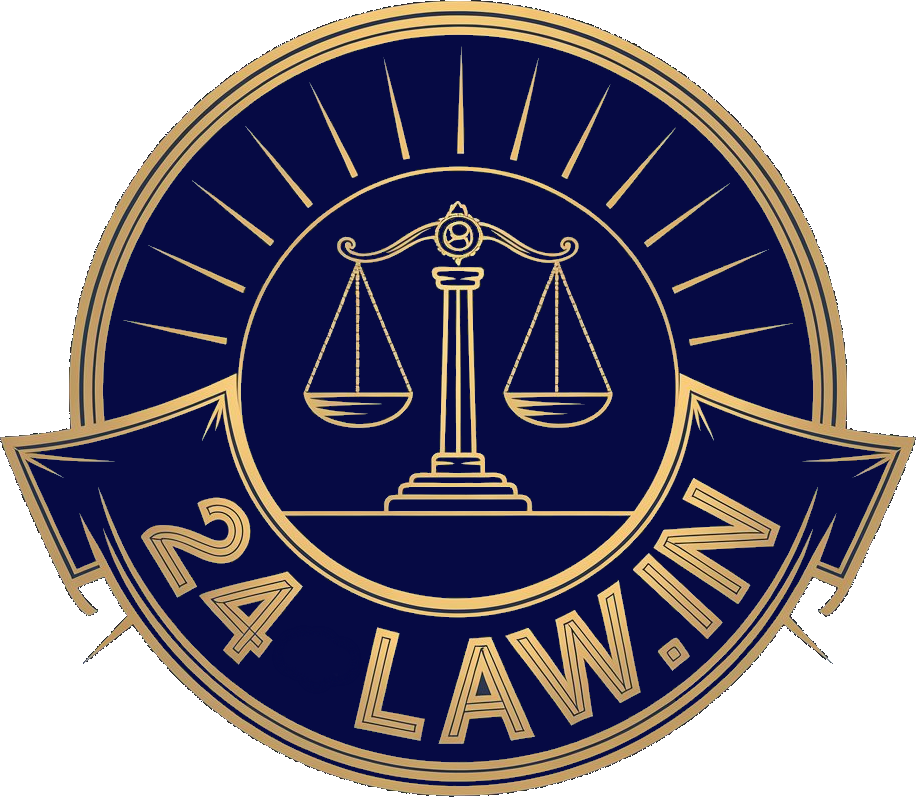CJI Has Authority To Recommend Judge’s Removal | Supreme Court Says In-House Mechanism And Recommendation Are Constitutionally Valid
- Post By 24law
- August 10, 2025

Kiran Raj
The Supreme Court of India Division Bench of Justice Dipankar Datta and Justice Augustine George Masih dismissed a writ petition challenging the constitutional validity of the "In-House Procedure" adopted by the Supreme Court to investigate complaints against High Court and Supreme Court Judges. The Court held that the procedure serves as a legitimate internal mechanism for self-regulation and maintenance of institutional integrity.
The Court observed that no interference was warranted and confirmed the dismissal of the petition. It recorded that the Chief Justice of India acted within his authority and the In-House Procedure did not encroach upon constitutional mandates relating to the removal of judges. The report submitted by the Committee under the Procedure was deemed preliminary, fact-finding, and non-punitive in nature.
The Bench held that the In-House Procedure bridges a constitutional gap between alleged judicial misconduct and the extreme measure of impeachment. It found no violation of Articles 14 or 21. The Court stated that the uploading of photographs and videos to the public domain, while not part of the Procedure, did not vitiate the inquiry because the petitioner had not objected to it at the appropriate stage. The petitioner's conduct was found insufficient to justify invoking Article 32 jurisdiction.
The petitioner, a Judge of the Allahabad High Court and formerly of the Delhi High Court, approached the Supreme Court under Article 32 of the Constitution, alleging violation of his fundamental rights under Articles 14 and 21. The complaint arose from an incident in the store-room of the judicial bungalow allocated to him in Delhi, where burnt currency notes were discovered following a fire. The incident prompted concerns about adherence to judicial ethics as set out in the "Restatement of Values of Judicial Life" dated 31st October 1997.
The Chief Justice of the Delhi High Court sought the petitioner's response, which denied ownership of the recovered currency and suggested that the notes had been planted to frame him. The petitioner did not dispute the fire or the discovery of currency notes. Following his response, the Chief Justice of India (CJI) constituted a three-member Committee to conduct an inquiry under the "In-house Procedure" formulated in the Full Court meeting of the Supreme Court dated 15 December 1999.
The Committee investigated the matter, inspecting the site, examining witnesses, and furnishing their versions to the petitioner. The petitioner was given an opportunity to present his case. The Committee submitted its report on 3 May 2025, concluding that the allegations had sufficient substance and that the misconduct warranted initiation of removal proceedings.
Based on the report, the CJI issued a letter dated 4 May 2025, offering the petitioner the option to resign or seek voluntary retirement by 6 May 2025. The petitioner responded on the due date, seeking reconsideration and additional time for a detailed representation, while expressing his inability to comply with the offered options. The response also contained a request to maintain confidentiality.
Despite the petitioner's request, a press release dated 8 May 2025 announced that the CJI had written to the President and the Prime Minister, forwarding the Committee's report and the petitioner's response. The petitioner then filed the writ petition on 17 July 2025, challenging the constitutional validity of Paragraphs 5(b) and 7(ii) of the In-house Procedure and seeking to quash the inquiry report and the subsequent actions.
Mr. Kapil Sibal, appearing for the petitioner, submitted that the procedure permitting the Committee to recommend removal and the CJI to forward such recommendations to constitutional authorities was ultra vires Articles 124 and 218 of the Constitution. He accepted the legitimacy of the in-house procedure as a disciplinary mechanism but contested the authority to recommend removal proceedings.
He argued that the process prescribed in Article 124(4) and (5), supplemented by the Judges (Inquiry) Act, 1968, forms a comprehensive code for judicial removal and that no parallel mechanism should interfere or initiate such process. The petitioner contended that the in-house process lacked procedural safeguards comparable to those in the Inquiry Act, such as cross-examination, framing of charges, and evidentiary scrutiny, and thus infringed Article 14.
The petition also raised concerns regarding publication of the inquiry materials on the Supreme Court website, contending that such disclosures pre-judged the petitioner in the public eye, infringing his Article 21 rights.
Mr. Sibal relied on several judgments, including Indira Jaising v. Supreme Court of India, Sahara India v. SEBI, Sub-Committee on Judicial Accountability v. Union of India, and C. Ravichandran Iyer v. Justice A.M. Bhattacharjee, to reinforce the claim that the CJI lacked constitutional authority to recommend removal and that the process lacked statutory backing.
He further submitted that no personal hearing was granted by the CJI before forwarding the report to the President and Prime Minister, contrasting this with the procedure followed in an earlier case involving a Judge of the Calcutta High Court.
The petitioners contended that these elements collectively rendered the process unconstitutional, arbitrary, and violative of the principles of natural justice.
The Court began by posing a foundational question: "Should the writ petition be entertained at all having regard to the conduct of the Petitioner?" In addressing this, the Court noted that the petitioner had failed to object to the publication of sensitive materials at the relevant time and had participated fully in the inquiry.
"The Petitioner can well be held disentitled to relief based on his tardy conduct but not, perhaps, on the ground of waiver," the Court stated, adding that the conduct did not inspire confidence for invoking extraordinary jurisdiction.
On the legal validity of the In-House Procedure, the Bench stated: "We are of the firm opinion that the argument is unacceptable for twin reasons... the PROCEDURE has its roots in the law declared by this Court under Article 141 of the Constitution." It stated that the Procedure had legal sanction through precedent and was not an extra-constitutional mechanism.
Referring to C. Ravichandran Iyer, the Court recorded: "The yawning gap between proved misbehaviour and bad conduct inconsistent with the high office of a Judge of a High Court could be disciplined by self-regulation through 'In-house Procedure'." It held that the Full Court's resolution in 1999 filled that constitutional gap.
Discussing the applicability of the Judges (Protection) Act, 1985, the Bench noted that the Act did not limit the power of the Supreme Court to initiate internal proceedings through the Procedure: "The term 'otherwise' read in conjunction with 'such action' is wide enough to encompass measures that the PROCEDURE contemplates."
In response to the argument that the Chief Justice of India had no authority to recommend removal, the Court observed: "The CJI is clearly an important person, if not the most, in the larger scheme of maintaining institutional interest and credibility to ascertain whether a Judge has indulged in misconduct."
On the concern that the CJI’s opinion could prejudice Parliament’s judgment, the Court stated: "The opinion is not forwarded either to the Speaker of the Lok Sabha or to the Chairman of the Rajya Sabha... the report is preliminary, ad-hoc and not final." It stated that Parliament's powers remain unaffected by the internal recommendation.
Regarding the nature of the Committee's report, the Court clarified: "The inquiry that is part of the PROCEDURE is designed to be a fact-finding inquiry as distinguished from a guilt-finding inquiry." It affirmed that the Committee’s work is preliminary and cannot substitute the formal inquiry prescribed under the Judges (Inquiry) Act.
The Bench also rejected the contention that the decision in Sub-Committee on Judicial Accountability precluded the In-House Procedure: "The ruling... cannot be read as a limitation upon the constitutional powers and responsibilities of the CJI... The constitutional silence on internal mechanisms provided space for responsible judicial innovation."
The Court also recorded: "Although the CJI is the head of the institution, he too is not above the law... utmost care has to be taken to ensure that any action of the CJI is not in deviation of the PROCEDURE."
Addressing the issue of publication of materials, the Court acknowledged: "Uploading of incriminating evidence available against a Judge under probe in the public domain is not a step which the PROCEDURE requires... But, then again, nothing really turns on the uploading... the Petitioner did not have any grievance in relation thereto at an appropriate time."
Finally, the Court concluded that the Procedure does not compromise judicial independence and adheres to the principles of fairness and institutional accountability.
The Court issued the following binding declarations and directions:
"We see no reason to hold paragraph 7(ii) of the PROCEDURE as infringing either any provision of the Constitution or the concept of separation of powers." It dismissed the contention that forwarding the Committee's report to the President and Prime Minister violated the Constitution.
"Paragraph 5(b) of the PROCEDURE in any manner does not transgress or is in conflict with any constitutional provision." The Court found that the Committee’s role in suggesting initiation of removal proceedings was not ultra vires.
On the nature of the report, the Court stated: "It is preliminary, ad-hoc and not final... no action for removal can be taken merely on the basis of the Committee’s report."
"If indeed, the CJI has reiterated the finding of the Committee... such a recommendation cannot be impeached on any valid and legal ground." The Court stated that even such a recommendation carries no binding effect on Parliament.
The Court declined to entertain the writ petition, concluding: "The conduct of the Petitioner does not inspire much confidence for us to entertain the writ petition."
In addressing the plea for a personal hearing before the CJI, the Court stated: "Even though a hearing 'could have been given', it cannot be equated with 'should have been given' in the absence of any such express obligation in the PROCEDURE."
Ultimately, the Bench dismissed the writ petition: "For the foregoing reasons, no interference is called for. The writ petition stands dismissed."
Advocates Representing the Parties:
For Petitioner(s): Mr. Kapil Sibal, Sr. Adv., Mr. Mukul Rohatgi, Sr. Adv., Mr. Rakesh Dwivedi, Sr. Adv., Mr. Siddharth Luthra, Sr. Adv., Mr. Siddharth Aggarwal, Sr. Adv., Mr. Jayant Mehta, Sr. Adv., Ms. Stuti Gujral, Adv., Ms. Manisha Singh, Adv., Mr. Vaibhav Niti, AOR, Mr. George Pothan Poothicote, Adv., Ms. Jyoti Singh, Adv., Mr. Anurag Jain, Adv., Mr. Keshav Saigal, Adv., Mr. Vishwajeet Singh, Adv., Mr. Prakarsh Kumar, Adv., Mr. Tasnimul Hassan, Adv. For the Respondents: NA
Case Title: XXX v. Union of India & Others
Neutral Citation: 2025 INSC 943
Case Number: Writ Petition (Civil) No. 699 of 2025
Bench: Justice Dipankar Datta, Justice Augustine George Masih




